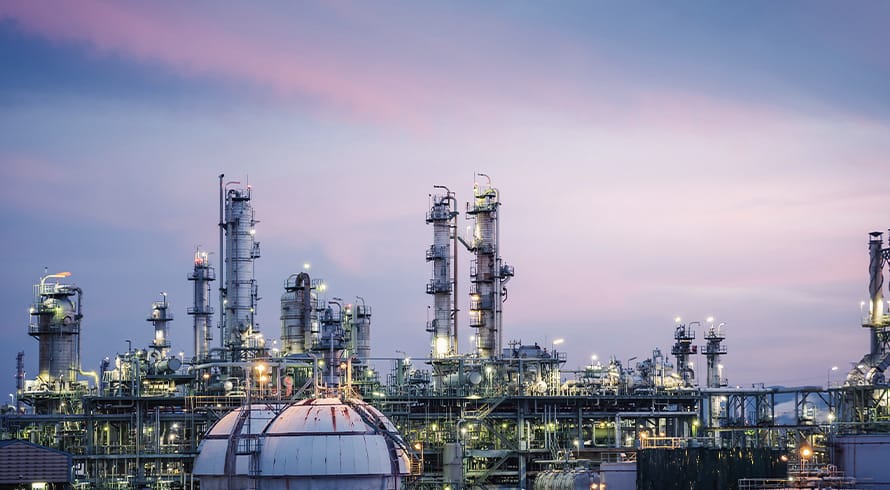The trader’s legal landscape
At a glance
- The ongoing liberation of the South African energy market has, as a natural consequence, stimulated interest in the trade and aggregation of electricity, with over 17 applications for trading licences submitted to the National Energy Regulator of South Africa since 2021/2022.
- While the Electricity Regulation Act 4 of 2006 (ERA) has long provided for trading and the associated licensing regime, the market was only truly unlocked with the amendment of the ERA in June 2021, which lifted the licensing threshold for energy generation projects to 100 MW (which was subsequently removed in its entirety in December 2022) and allowed for wheeling of such energy to multiple customers.
- This alert serves to provide a consolidated snapshot of the key regulatory developments and hurdles defining the trader's current legal landscape.
While there are undoubtedly significant opportunities that stand to be unlocked, the environment is in such a state of flux, that existing and aspirant traders are having to navigate persistent market uncertainty.
Against this backdrop, this alert serves to provide a consolidated snapshot of the key regulatory developments and hurdles defining the trader’s current legal landscape.
Legal framework
The Electricity Regulation Act 4 of 2006 (ERA) defines “trading” as the wholesale or retail buying and selling of electricity and prohibits any person from trading in electricity without first having obtained a licence from NERSA.
While the ERA has long provided for trading and the associated licensing regime, the market was only truly unlocked with the amendment of the ERA in June 2021, which lifted the licensing threshold for energy generation projects to 100 MW (which was subsequently removed in its entirety in December 2022) and allowed for wheeling of such energy to multiple customers. This resulted in market access to a deep pipeline of private generation capacity and the ability to wheel such energy to private offtakers, be it by means of a direct bilateral arrangement or through a licensed trader as intermediary.
With the South African wholesale energy market still under development, traders are currently acting as aggregators whereby they are purchasing and pooling electricity from multiple private power producers to on-sell and wheel to a portfolio of end-use customers (the ‘many-to-many’ model). Thus far, the only regulatory ‘control’ mechanisms governing the role and activities of traders are the licensing requirement under the ERA and the conditions imposed under such licences.
Following the influx of interest in trading and legal opposition thereto (discussed below), NERSA published a notice on 16 July 2025 confirming that it is embarking on the development of electricity trading rules (Trading Rules) under section 35 of the ERA to “create a fair and balanced framework for electricity traders”. The notice sets out initial timelines for the rules to be developed and approved, with June 2026 being the anticipated date that they would be formally gazetted. However, NERSA has since committed to expedite this process, aiming to finalise the Trading Rules within an accelerated three-month period.
Market opportunities
Wheeling
With the amendment of ERA in June 2021, the primary focus in the market was initially on the conclusion of longer-term corporate power purchase agreements (PPAs) between renewable energy independent power producers (IPPs) and large commercial and industrial offtakers for the wheeling of electricity. However, it quickly became clear that this standard model was only accessible by intensive energy users to the exclusion of a much larger and more diversified customer base comprising of businesses with lower energy demands.
In the latter instance, greater flexibility had to be introduced to cater for customers that could not commit to long-term PPAs (be it due to uncertain future electricity needs, credit concerns, price risk or balance sheet impacts) or to offtake all energy generated by a single generation facility.
It is here where traders were able to step in by offering more flexible, shorter-term PPAs that could be optimised to better match the consumption profiles of customers, while at the same time absorbing the risk through diversification of offtaker portfolios.
While there are still limitations to traditional wheeling, as discussed below, the role of the trader has become indispensable to providing access to clean, affordable energy to a large section of the market.
Virtual wheeling
As traditional wheeling continued to gain traction, certain regulatory and practical factors limited its ability to cater for nuanced energy supply solutions, including:
- Where the offtaker has a municipal point of connection to the grid, wheeling is only possible insofar as the municipality has adopted a formal wheeling framework, inclusive of a tariff and billing policy.
- An offtaker is required to amend its electricity supply agreement (ESA) with Eskom or the relevant municipality, depending on its point of connection. This is to ensure wheeling credits are reflected on the offtaker’s electricity bill.
- Where an Eskom-connected generator seeks to wheel power to an offtaker that has a municipal grid connection, it will require an amendment to the ESA between Eskom and the municipality to ensure the municipality’s electricity bill caters for wheeling credits. Generally, Eskom requires a security deposit prior to signing an amended or new ESA. While Eskom did announce that it will waive this requirement for municipalities in good financial standing, many municipalities will not be able to pass this test.
The above factors are particularly problematic in instances where a customer has multiple offtake sites in various locations, each with a different point of connection to the transmission and distribution network.
Recognising what essentially became an insurmountable hurdle, Eskom developed its virtual wheeling platform (VWP), which was formally launched at the beginning of June 2025 following the successful rollout of a virtual wheeling pilot project. For more details on the basic commercial structure of virtual wheeling, see our previous alert on this here.
When virtual wheeling was first introduced as a concept in South Africa, it was widely recognised that traders would play a crucial role in unlocking its true potential. However, in launching the VWP, it was announced that traders would initially be excluded from accessing the VWP pending finalisation of the Trading Rules. While there is merit in wanting to ensure improved regulation of the space, the decision has been publicly scrutinised as being anti-competitive. Concerns have also been raised over whether Eskom is legally competent to make and enforce this decision.
Expediting the finalisation and adoption of the Trading Rules is therefore fundamental to ensure traders are not excluded from a platform that, at its core, envisages their participation.
South Africa’s Wholesale Energy Market
Commencement of the Electricity Regulation Amendment Act 38 of 2024 on 1 January 2025 introduced significant amendments to the ERA that, among other things, laid the foundation for the South African Wholesale Energy Market (SAWEM). The SAWEM is aimed at establishing a multi-market system that will reshape the electricity supply industry, allowing for competitive trading in electricity across standardised market platforms. For more details on the structure of the SAWEM, see our previous alert on it here.
The first draft of the SAWEM Market Code (Market Code) was published for public consultation in April 2024. Following extensive workshops held over the course of 2024, a revised draft Market Code was published by the National Transmission Company of South Africa (NTCSA) for further comment and is due to be submitted to NERSA at the end of September 2025.
The SAWEM and role of traders are perfectly complementary – while the market requires traders to unlock its full potential, traders will at the same time be able to use the market to expand their offering and business. Traders will have an important role to play in representing consumers as balance responsible parties or facilitating active trades in the day ahead or intraday markets on behalf of other parties. Further, the market offers traders a platform to better manage their portfolio, where they can offer net or excess energy under existing PPAs into the market, or purchase additional energy off the market to cater for any supply shortfall.
Importantly, traders who opt not to participate in the SAWEM as market participants will nevertheless qualify as balance responsible parties and be liable for costs for any imbalance caused by the difference in real and predicted supply or demand.
While the intention is to launch the first phase of the SAWEM in April 2026 and have it fully implemented by 2031, concerns over likely delays have already been raised, with a focus on capacity, resource and grid constraints. The Trading Rules are hopefully being developed taking into account the role of traders in the context of SAWEM and the most recent draft of the Market Code.
Legal challenges
Grid access
Since June 2023, access to the grid has been regulated by Eskom in terms of the Interim Grid Capacity Allocation Rules (IGCARs). One of the criteria under the IGCARs is proof of application for the generation facility’s registration or licensing, which, in turn, requires a network services provider (NSP) letter. Until recently, generators that concluded PPAs with traders could include the trader as the offtaker, without providing details of account or final points of delivery.
A presentation by Eskom dated May 2025 reflects that this will no longer be allowed and that “no traders’ details will go into NSP consent letters”. The presentation further highlights the issue of the same users or offtakers being included in multiple applications where a trader is involved. To obtain an NSP letter, applicants for grid capacity will have to provide details of ultimate end users, even where they have concluded a PPA with a trader as an intermediary between generation and offtake.
While the trader market is still somewhat in its infancy in certain respects, this approach contradicts the flexibility that underpins the aggregator model, where we see very short-term PPAs being concluded with offtakers and thus the potential continuous variation in customer portfolio. Also, in many instances offtakers will not be finalised until such time as grid capacity is secured, so it risks becoming a ‘Catch-22’ scenario that blocks traders from securing generation capacity.
Eskom brings court application against grant of trading licences
Significant uncertainty was created when Eskom first objected to the granting of several applications for trading, import and export licences during a NERSA public hearing in July 2024. Following its objection, Eskom published a statement explaining the rationale for its position on the issuance of these licences, including that:
- it would result in an overlap with its existing distribution licence, thus resulting in multiple licensees supplying the same area or customers in contravention of NERSA’s Rules for Licensable Distribution Areas of Supply; and
- the traders ‘cherry-pick’ large power users as customers, thus jeopardising Eskom’s tariff structure, including cross-subsidisation.
NERSA nevertheless granted the licence applications during October 2024, with the reasons for its decisions published between April and June 2025. Shortly thereafter, on 24 July 2025, Eskom instituted legal proceedings in the High Court for NERSA’s grant decisions to be reviewed and set aside in terms of the Promotion of Administrative Justice Act 3 of 2000.
In its papers, Eskom reiterates, expands on and adds to the aforementioned grounds of objection, arguing inter alia that:
- NERSA’s decisions reflect an uniliteral policy shift that has not been thought through in terms of potential impacts, including on the electricity tariff pricing structure.
- A governing framework, inclusive of the Trading Rules, is a pre-condition to the introduction of independent traders operating in Eskom-licensed distribution areas so as to ensure fair balancing of interests.
- Eskom’s distribution licence includes the exclusive right to distribute and supply electricity in its licensed areas of supply. It is argued that its right to supply includes the right to trade.
- In addition to their ability to cherry-pick customers, Eskom cannot compete with traders, who are able to set more competitive tariffs.
- Applicants for trading licences are required to consult with Eskom prior to submission of their applications to NERSA. In addition, Eskom should not have been treated “as a normal potentially interested party”. Rather, NERSA was required to consult with Eskom separately and prior to the public hearings given the extensive impact of the licence applications.
While there is merit in calling for more certainty and consistency under an approved regulatory regime, the arguments put forward seem to discount several market, legal and practical considerations, including inter alia that:
- The very essence of the amended ERA and ongoing process to unbundle Eskom is to establish an open and competitive electricity supply market in which traders, amongst other parties, will play an important role.
- The licensing and operation of independent traders in the South African market is not new, with one of the first trading licences being granted in 2009 and several others granted in 2022/2023, in respect of which no objections were lodged.
- Traders use traditional wheeling as a mechanism to sell and “supply” electricity to their customers. It is unclear how this is different from an IPP generating energy and using the existing transmission and distribution network to wheel and supply electricity to one or more offtakers situated within Eskom’s areas of distribution– something that is now a well-established practice.
- There do not appear to be any legal grounds for asserting that Eskom should have been afforded different or preferent rights in terms of the consultation process that was undertaken.
- The arguments around the interpretation and scope of “supply” are quite nuanced and need closer legal analysis and scrutiny. However, at the very least there does seem to be failure to interpret the meaning of the term within the context of the distribution licence and NERSA’s Rules for Licensable Distribution Areas of Supply, especially seeing that it is defined under ERA to also mean inter alia “distribution”.
Since the institution of the proceedings and following the call from representative business organisations for Government to intervene, the Minister of Electricity and Energy (Minister) has issued a public statement calling on Eskom to stay or withdraw the matter. In his statement, the Minister gives recognition to the need for “a stable, transparent and predictable framework” that ensures “investor confidence, system reliability and orderly liberalisation”, thus not discounting Eskom’s concerns over the need for Trading Rules to avoid “unregulated or premature market liberalisation”. However, he urges that a more collaborative approach be adopted.
Local government representative groups have expressed real concern over the potential impact of an unregulated traders’ market on municipal revenue and have requested that NERSA suspend the processing of trading licence applications until such time as the Trading Rules are formalised.
It is therefore unclear what Eskom’s next steps will be, with NERSA and traders having to prepare to oppose the application pending further announcements.
The information and material published on this website is provided for general purposes only and does not constitute legal advice. We make every effort to ensure that the content is updated regularly and to offer the most current and accurate information. Please consult one of our lawyers on any specific legal problem or matter. We accept no responsibility for any loss or damage, whether direct or consequential, which may arise from reliance on the information contained in these pages. Please refer to our full terms and conditions. Copyright © 2025 Cliffe Dekker Hofmeyr. All rights reserved. For permission to reproduce an article or publication, please contact us cliffedekkerhofmeyr@cdhlegal.com.
Subscribe
We support our clients’ strategic and operational needs by offering innovative, integrated and high quality thought leadership. To stay up to date on the latest legal developments that may potentially impact your business, subscribe to our alerts, seminar and webinar invitations.
Subscribe



